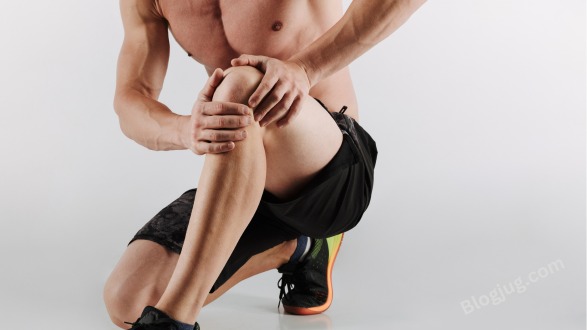Overview
Knee pain is a common problem that occurs in people of all ages. Your knee pain could possibly be caused by an injury such as a torn ligament or torn cartilage. Medical conditions such as arthritis, rheumatism, and infection can also cause knee pain.
Many types of moderate knee pain are treated effectively with self-care methods. Physical physiotherapy and other knee replacement options are available to relieve pain. although there are some instances where knee surgery is required.

Symptoms of Knee Pain
Knee pain might vary in location and severity depending on what’s causing it.. When knee discomfort is present, some indications and symptoms to look out for are:
1. Swelling and rigidity.
2. Warmth and redness to the touch.
3. Instability or feebleness.
4. Crunching or popping sounds.
5. Unable to extend the knee to its fullest extent.
When to see a doctor
1. Feeling like your knee gives out or is unstable, or you are unable to bear weight on it.
2. Having noticeable knee edema.
3. Cannot fully bend or extend your knee
4. Observe a noticeable abnormality in your knee or leg
5. Have redness, discomfort, and swelling in your knee in addition to a fever
6. Have severe knee pain linked to an injury
Causes
Any of the ligaments, tendons, or fluid-filled sacs (bursae) that encircle your knee joint, in addition to the bones, cartilage, and ligaments that make up the joint itself, may be impacted by a knee injury. Some of the more common injuries to the knee are:
1. ACL injury: One of the four ligaments that joins your shinbone to your thighbone is the anterior cruciate ligament (ACL), which can be torn in an ACL injury. Those who play basketball, soccer, or other sports requiring quick direction changes are more likely to suffer ACL damage.
2. Fractures: In falls or car accidents, the bones of the knee, particularly the kneecap (patella), can break. Furthermore, people with osteoporosis may infrequently break their knees from simply taking the wrong step.
3. Torn meniscus: The hard, rubbery cartilage that sits between your shinbone and thighbone and serves as a stress absorber is called the meniscus. If you suddenly twist your knee while putting weight on it, it may tear.
4. Knee bursitis: The bursae, which are tiny fluid-filled sacs that cushion the outside of the knee joint and allow ligaments and tendons to move easily across it, can become inflamed as a result of certain knee injuries.
5. Patellar tendinitis: Tendons are thick, fibrous structures that connect muscles to bones. Tendinitis is the irritation and inflammation of one or more of these tissues. The patellar tendon, which connects the kneecap (patella) to the shinbone and permits jumping, running, and kicks, can become inflamed. Patellar tendinitis is a condition that can affect runners, skiers, bikers, and participants in jumping sports and hobbies.
Mechanical problems
The following are a few instances of mechanical issues that might result in knee pain:
1. Loose body: A fragment of bone or cartilage may occasionally break off and float in the joint space due to damage or degeneration. This might not cause any issues unless the loose body restricts the movement of the knee joint, in which case the situation would resemble a pencil stuck in a door hinge.
2. Iliotibial band syndrome: This is the result of the iliotibial band, a strong band of tissue that runs from the outside of your hip to the outside of your knee, becoming so tight that it rubs on the outside of your thighbone. Bicyclists and distance runners are particularly prone to iliotibial band syndrome.
3. Dislocated kneecap: This happens when the patella, the triangle bone covering the front of the knee, slips out of position, usually to the outside of the knee. You may be able to notice the dislocation in certain situations where the kneecap remains dislocated.
4. Hip or foot pain: You may be able to save your troublesome joint by altering your gait if you suffer from hip or foot pain. On the other hand, knee pain could result from this altered walk putting more load on your knee.
Types of arthritis
There are over a hundred varieties of arthritis. The knee is most likely to be affected by the following types:
1. Osteoarthritis: Osteoarthritis is the most prevalent type of arthritis, sometimes known as degenerative arthritis. It’s a degenerative disorder brought on by aging and wear and tear on the knee cartilage.
2. Rheumatoid arthritis: Rheumatoid arthritis, the most crippling type of arthritis, is an autoimmune disease that can affect practically any joint in the body, including the knees. Rheumatoid arthritis is a chronic condition, yet it can fluctuate in intensity and even flare up and disappear.
3. Gout: Uric acid crystals accumulate in the joint and cause this kind of arthritis. Gout can affect the knee as well as the big toe, however it usually affects the latter.
4. Pseudogout: Pseudogout is frequently confused with gout and is brought on by crystals containing calcium that form in the joint fluid. The most common joint to have pseudogout symptoms is the knee.
5. Septic arthritis: An infection in your knee joint can occasionally cause swelling, discomfort, and redness. Fever is a common symptom of septic arthritis, and pain usually doesn’t start until after trauma. The cartilage in the knee can be severely damaged very fast by septic arthritis. Visit your doctor as soon as possible if you experience knee pain along with any of the signs of septic arthritis.
Other problems
A generic term for discomfort that originates between the thighbone and the kneecap is patellofemoral pain syndrome. It is prevalent in sports, young adults, particularly those whose kneecap is malaligned in its groove, and elderly persons, who typically get it as a consequence of kneecap arthritis.
Risk factors
A number of factors can increase your chance of knee problems, including:
1. Overweight: Being overweight or obese puts extra strain on your knee joints, even when performing everyday activities like walking or stair climbing.
2. Lack of muscle flexibility or strength: The risk of knee injury might be raised by a lack of strength and flexibility. Strong muscles support and stabilize your joints, while flexible muscles allow you to move through your full range of motion.
3. Certain sports or occupations: Your knees will be under more strain from some sports than from others. Your risk of knee damage is increased by basketball jumps and pivots, alpine skiing with its stiff ski boots and propensity for crashes, and the repetitive beating your knees receive when you run or jog. Work occupations like farming or construction that involve knee strain regularly may also put you in danger.
4. Previous injury: The likelihood of suffering another knee injury increases if you have had one in the past.
Complications
Not every knee ache is severe. However, if left untreated, some knee injuries and illnesses, including osteoarthritis, can worsen discomfort, damage to joints, and incapacity. Furthermore, even a small knee injury increases your risk of developing a similar problem down the road.
Prevention
Although it’s not always possible to avoid knee pain, the following methods could help stop injuries and joint deterioration:
1. Keep extra pounds off: It’s one of the best things you can do for your knees to maintain a healthy weight. Your joints are strained more by every extra pound you gain, which raises your risk of osteoarthritis and other ailments.
2. Be in shape to play your sport: Spend time exercising your muscles to get them ready for the demands of participating in sports.
3. Practice perfectly: Make sure your sports or activity-related technique and movement patterns are as good as they can be. Professional guidance can be very beneficial.
4. Get strong, and stay flexible: One of the main causes of knee injury is weak muscles. Building up the muscles on the front and rear of your thighs that support your knees—your quadriceps and hamstrings—will aid you. Training for balance and stability improves the efficiency with which the muscles surrounding your knees cooperate.
Furthermore, stretching is essential since tense muscles can potentially lead to damage. Aim to incorporate exercises for flexibility into your training.
5. Be smart about exercise: Should you suffer from osteoarthritis, persistent knee discomfort, or recurrent injuries, it can be necessary to modify your exercise regimen. At least a few days a week, think about moving to low-impact activities like swimming, water aerobics, or other similar options. Sometimes relief is as simple as cutting back on high-impact activities.









3 thoughts on “Relief from Knee Pain: Effective Solutions”